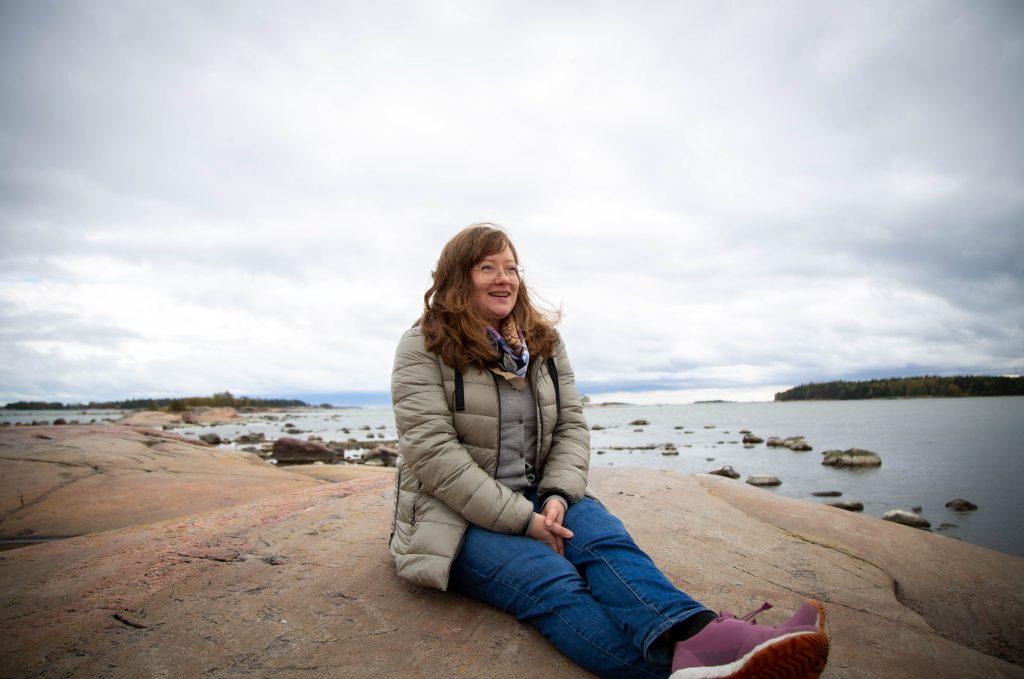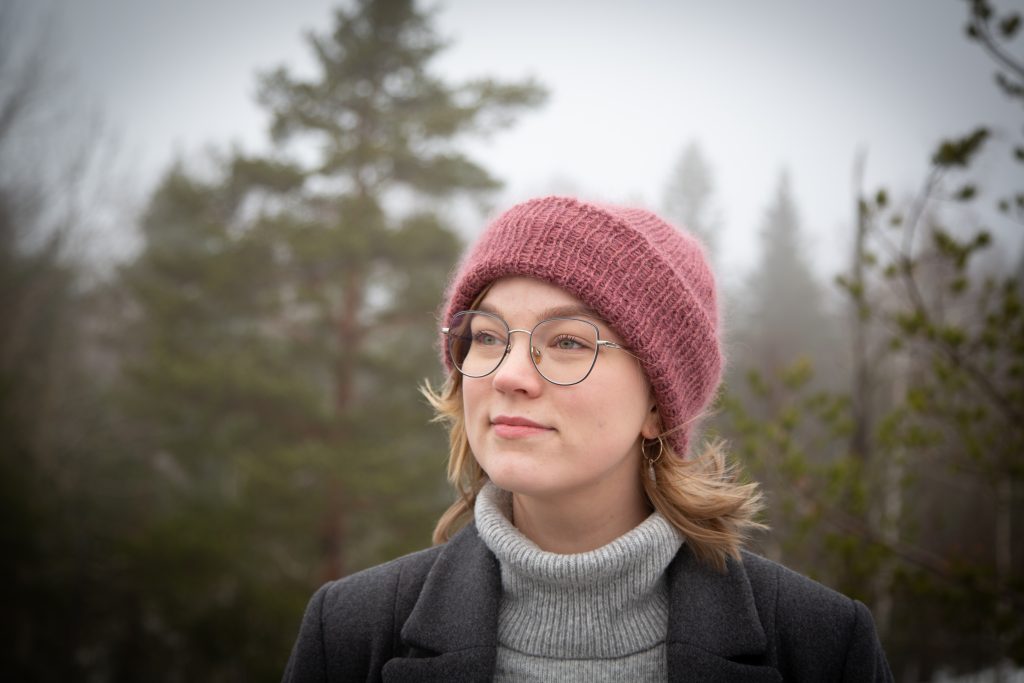(Re)defining Peace
Finland seeks a new foothold as a peace educator and mediator in a turbulent world. Even in the midst of restless times, there’s always space to build peace. It doesn’t happen overnight, but the more we build peace now, the readier we are to build bridges again, once active hostilities have ended.
(Reading time 12 minutes.)
Photos & videos: Heli Pekkonen
Text: Johannes Roviomaa
We asked an educator, a peace researcher and a practitioner who all work with youth, what peace work is currently like in Finland– and what direction things should take in the midst of turbulent times.
HELSINKI, Finland.
Helsinki, the capital city of Finland, rests on the shores of the Baltic Sea as if it had nothing better to do. It’s the beginning of October, raining and windy – and the ”happiest people in the world” are back indoors.
Hakaniemi is a historical place for the working class, trade unions and non-governmental organisations in the eastern part of Helsinki, by the sea, close to the city centre. One such organisation is The Finnish Peace Education Institute (Rauhankasvatusinstituutti, RKI).
The core of RKI’s work is to develop the knowledge and skills that enable people to act towards a sustainable, equal and just society through education.
“If we have less discrimination, we have more positive peace and more inclusion. That is a vital ingredient of peacebuilding” says Elina Lauttamäki, 43, peace educator and practitioner. She encountered the concept of peace education for the first time twenty years ago, when she was thinking about her future career as a sociology student.
Negative peace refers to the absence of direct violence, while positive peace refers to the absence of indirect violence that allows individuals to participate in the community or society to their full potential.
“Everything does not have to happen in one day, or in one year. Sometimes it takes a lifetime to make a change.”

Elina Lauttamäki
While the work towards inclusion and reducing discrimination stays at the core of her work, the new world political situation has forced Lauttamäki and her colleagues to rethink peace work and peace education. One of the more critical questions that Lauttamäki has grappled with is: How can you teach children and youth about peace when at the same time the World built by adults seems to be broken – full of war, violence and destruction?
”We must tell the children and youth the truth if they ask, but we must also be wise and choose actively how to frame it. As adults, we cannot steal hope from them.”
Lauttamäki says that it is important to distinguish everyday people and politics. She often guides teachers to tell youth that just because countries are at war with each other does not mean that all people are at war with each other.
”Working with peace education professionally brings me hope”, Lauttamäki says. “I believe that with peace education teachers, youth workers, individuals, even countries, the whole planet can become safer, more livable; so I believe in it”, she says. “Everything does not have to happen in one day, or in one year. Sometimes it takes a lifetime to make a change.”
We need to rethink peace together and in as many voices as possible
One of the key elements of the New Gen project has been to create a space where young people, and other participants of a wide range of different expertises in peace, can process their thoughts and feelings in a new security environment.
The training has provided a way to discuss feelings in a safe space and give concrete tools in work, studies and everyday life.
One of the participants is Jasmin Paananen, 24, a University Student of Middle Eastern in Helsinki.
”I was wondering about peace related things quite alone. Meeting people who are like-minded and share the same feelings, was very important to me”, says Paananen.
Paananen says it is also important to explore and address peace issues outside the ”peace bubble” – waking up people of different groups who might think differently about peace to dialogue.
First introduction to peace work was three years ago, when she travelled to Palestine and Israel and met local youth, peace activists and experts who work in different NGOs. It was an EU Solidarity Corps funded project.
”I definitely have hope in NGOs, I have hope in the youth and I think anyone can contribute to more peace.”

Jasmin Paananen
“All conflicts can be resolved”
The snow on the ground is like powder, barely covering the asphalt in Helsinki. It’s the beginning of January, a new year has begun.
”People were not communicating with each other. So in the back of my mind I was always asking questions like why this happened…”, says Marina Danoyan, Project Manager of CMI – Martti Ahtisaari Peace Foundation. She was born and raised in Armenia. “You see the children that were born in front of your eyes, all of a sudden they become soldiers and they go to the front line… and some of them die.”
She moved to Finland in 2008. The same year the former President of Finland, Martti Ahtisaari (1937–2023), was awarded the Nobel Peace Prize.”Peace is a matter of will. All conflicts can be resolved”, said Ahtisaari in his Nobel speech in Oslo December 2008.
Danoyan says “CMI’s approach to inclusivity is not only about women, and men, but it’s about inclusion of different groups that are usually not given a voice.”
”When we look at the statistics, women’s participation in peace processes is still very limited although it is stated as a priority in the UN resolution 1325”, Danoyan says. CMI has contributed to involving women in mediation processes and highlighting their role in conflict resolution. “When we talk about women’s role in peacebuilding, it is about equal opportunities… women have equal rights than men to participate in these [peace] processes.”
According to UN Women, peace processes that included women as witnesses, signatories, mediators and negotiators demonstrated a 20 percent increase in the probability of peace agreement lasting at least two years. “If we miss solutions that come from one big part of society, then we miss a huge opportunity” says Danoyan.
The participation of both women and young people in peace projects is well understood in Finland, the CMI and the field of peace research.
Danoyan says that it is crucial to listen to young people and give them a space to express their ideas during peace processes.
“If there is a risk that I’m losing my motivation, it is young people whose ideas, optimism and creativity inspires me,” Danoyan says.
She would like to focus more on engaging youth in peace work. ”I believe in young people and that they can bring fresh solutions that we maybe cannot think about.”
Danoyan says that the New Gen-project created a unique space where peace work, peace research and peace education came together. In the future, Danoyan would like to learn more about emotions in conflict and the psychosocial aspect of peace building.
Now Danoyan is Project Manager for Ukraine and the Women in Peacemaking programme. Currently she is working on a project aiming to support Ukrainian resilience and social cohesion inside Ukraine. “They live in conflict every day, they are struggling, but still they are strong and very optimistic for the future of their country.”
“All of us have to ask… what role do we play, and what agency do we have, and to what extent are we ready to get out of our comfort zone and join in the struggle for peace?”
What better place to organise Peace Day than Tampere – the Sauna Capital of the World, home to industry, theatre and ice hockey. The city was a main venue of the Finnish Civil War in 1918. Bullet holes can still be seen in the building walls, which are now, over one hundred years later, providing space for music, culture and social events.
Often at this time of year in December, the ground is already covered in snow, but now it’s black outside the University of Tampere campus. It’s three weeks until Christmas.
About a hundred and fifty people have gathered in the main hall of the University to listen to conversations about peace. The theme of the year is (re)searching peace. One of the key organizers is Tampere Peace Research Institute (Tapri).
The event is small, but the topic of discussions is enormous. The key question is how peace research and practice can “adapt to pluralities of peace(s) and to the contested nature of defining peace”.
”Currently peace is sidelined and has been taken away from people. It can be talked about as long as you do not enter any political discussions. We need to re-politicize peace”, says Anush Petrosyan, Doctoral Researcher in Tapri, University of Tampere. She is originally from Armenia.
Petrosyan’s research includes collective memory and forgiveness in post-conflict societies, trauma-informed reconciliation and commemorative practices and silenced narratives.
Two days after the Peace Day, the dust has settled. There is plenty to think about in the questions that have been raised about peace and conflict.
Often conflicts are something that smoulder for decades, just beneath the surface of society, as traumas, anger, confrontation, unresolved disputes.
She participated in a panel discussion about the role of peace education in times of uncertainty and polarization. “All of us have to ask… what role do we play, and what agency do we have, and to what extent are we ready to get out of our comfort zone and join in the struggle for peace?”
"Open your soul to me, so we can talk to each other."
Petrosyan grew up in the middle of conflicts, in April 2016 there was a four-day war, between Armenia and Azerbaijan.
Petrosyan says that she is tired, but her eyes fill with enthusiasm, when we start talking about research. ”We don’t have the luxury of not thinking actively about peace and conflicts”, says Petrosyan who combined communication and media studies with genocide and human right studies. “It is very difficult to talk about peace if we do not research and understand the depth of the conflict and how it was generated.”
After the 2018 revolution in Armenia, Petrosyan started democracy work, there was a new kind of hope in the air. Then in 2020, The Second Nagorno-Karabakh War started. Petrosyan says that it was a “wake up call” for her. “It’s during the war when we need to talk about peace and its importance”. She made a transition from media studies to Peace studies, and by coincidence found out about Tampere University Peace and Conflict Program.
”The freedom of academics to choose the way they want to go is something that very much attracted me in Tapri”, says Petrosyan.
Petrosyan says in order to ensure successful treaties we “need to take a stronger stance for coming together, coexisting together, remembering, grieving, and forgiving together.”
“I think we need to reconsider that we should not be afraid of politicizing our work and putting it in the forefront.” Petrosyan goes on to say ”There is often a fear of activism in academia… we research a place, and how can we be silent about it and be very sterile about it… that’s where we become complicit.”
In Armenian there is a saying, ‘Open your soul to me, so we can talk to each other.’
The work towards peace is never ending, unrelenting and uncertain. If you look at peace work from a distance, you might see tiredness, exhaustion, and weariness.
Look closely, and you see also full of inexhaustible hope, action, support, and compassion.
CRITICAL QUESTIONS OF PEACE – FINLAND
What role do we have?
How do we include different voices?
Am I building peace in my everyday life?
What are the values that we are striving for?
How is peace talked about
Building resilient communities
